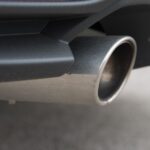What are the Carrying Costs for Your Auto Parts Inventory
Carrying costs refer to the cost of keeping Auto Parts Inventory in stock. They are also known as inventory carrying costs or holding costs. They can have a major impact on your dealership’s bottom line.
Carrying costs for your auto parts inventory may include:
- Storage costs
- Insurance
- Paying for goods with interest and fees through loans
Costs of employees – including administrative and parts employees
- Depreciation
- Obsolescence
- Shrinkage
You may also have to pay for the loss of another opportunity. This could include the cost to store your equipment instead of using another bay. It could also mean that you are unable to invest because of the inventory holding up capital and resources.
You might need to make a change
- Frequency of ordering
- Reorder points
- Stock levels that are ideal
How fast parts can be moved
Keep a reasonable amount of safety stock
If you don’t have enough parts or if there is an increase in demand, your parts department could be in trouble. You want to make sure you have enough parts to meet your forecasted demand. However, too many can lead to high carrying costs.
Your inventory management software can help you ensure that you maintain a safe stock. Many software programs will automatically calculate safety stock, or provide the information you need to manually calculate it.
- (Maximum Daily Use X Lead time In Days) – Average Daily Usage X Average Length In Days
- No matter what method you choose, it is vital to verify that your inventory records are accurate. Otherwise your safety stock calculations could be inaccurate.
Reduce obsolete inventory
Inadequately managed inventory can lead to high carrying costs and capital loss. Optimizing ordering processes is key to reducing obsolete inventory. You can do this by focusing on seasonality and historical demand when purchasing. Keep track of inventory age and technology changes so you can get rid of the inventory before it loses its value. You can do this by offering promotions or reaching out to other shops in order to purchase excess inventory.
Finally, ensure that your records are organized and accurate so you can see a complete picture of your inventory.
Space can be used more effectively
In many ways, poorly managed inventory can lead to higher carrying costs. Unorganized inventory can lead to inaccurate inventory records. This can cause increased obsolescence and ordering parts that you don’t have but are unable to find.
Also, if you have unorganized parts, it could mean that you are using up more space than is necessary. This can increase storage costs and overall costs.
Use properly labeled bins, vertical shelving, and well-planned layouts (i.e. You can reduce storage costs by placing the most popular items in central areas. You can also lower the chance of obsolescence by having your most popular items in central locations.
Additional Resource:
https://www.collinsdictionary.com/dictionary/english/automotive-parts
https://partsfan.com/
https://faiauto.com/






